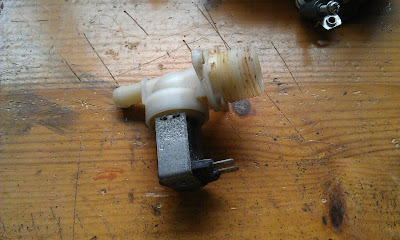Edge-lit Display Decoder Test

The display is being illuminated using 10 white LEDs salvaged from a £1 string of battery-powered Christmas lights. This is a very cheap way to get white LEDs with flat tops and I found 30 more LEDs on strings like this so that's enough for 3 more digits. The decoder takes a 4-bit binary-coded decimal (BCD) value and uses a 74HC138 to decode 0-7 and a 74HC00 to decode the remaining 8 and 9 digits (values above 9 are meaningless in this set-up). To test the circuit I connected a rotary BCD-encoded switch I've had in the spares box for almost 20 years. The switch goes from 0-15 (decimal) coded in 4-bits and the flickers to 0 you can see in the video are caused by the switch breaking before make. This is the hard work done. Using 2 more HC chips and a ULN2803 I can build a simple 2-4 line decoder with increased current handling. This will allow a PIC or Arduino to multiplex drive 4 displays using just 6 output lines. I might even use an old 16F84 I have as an I2C slave to




